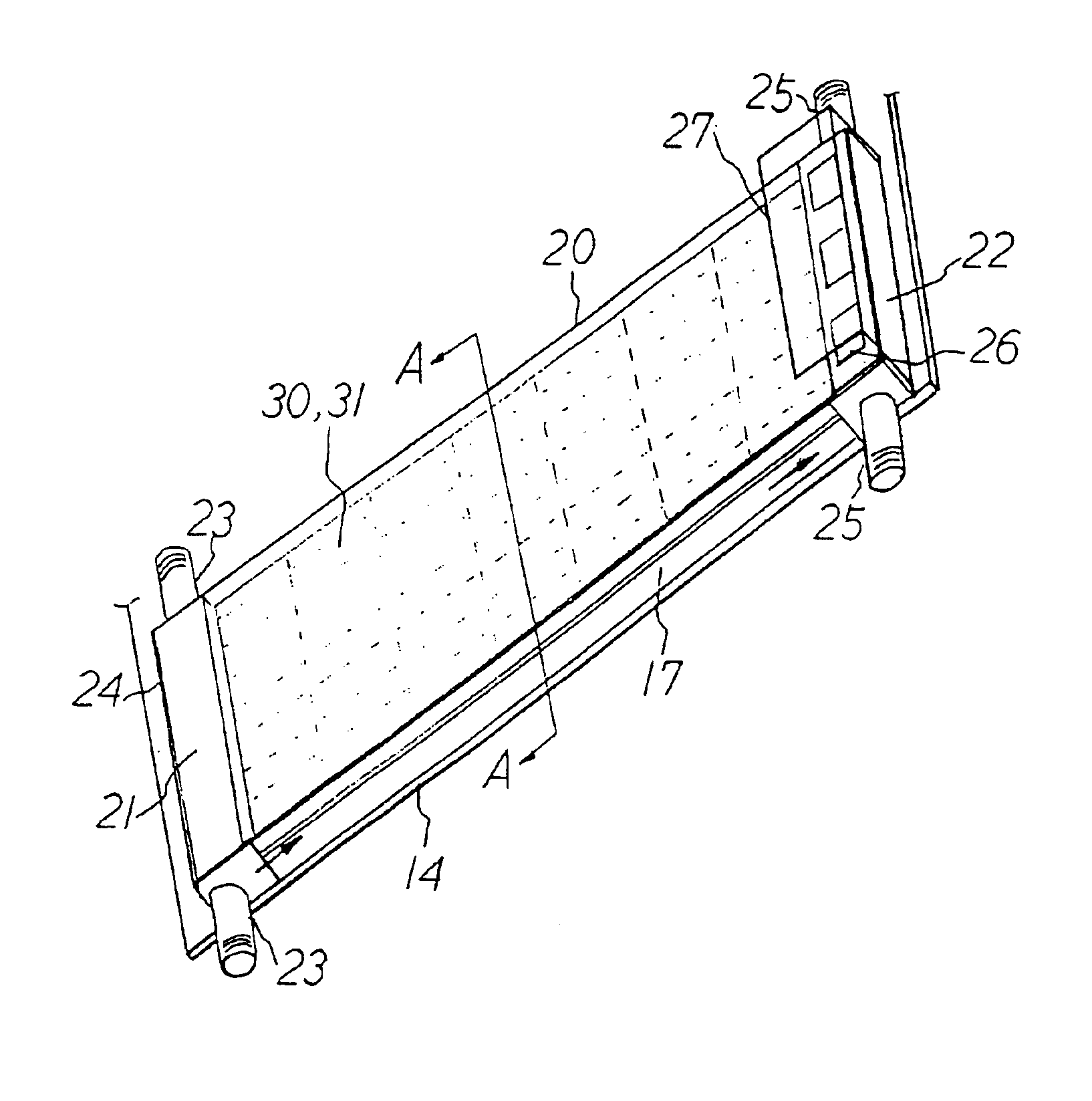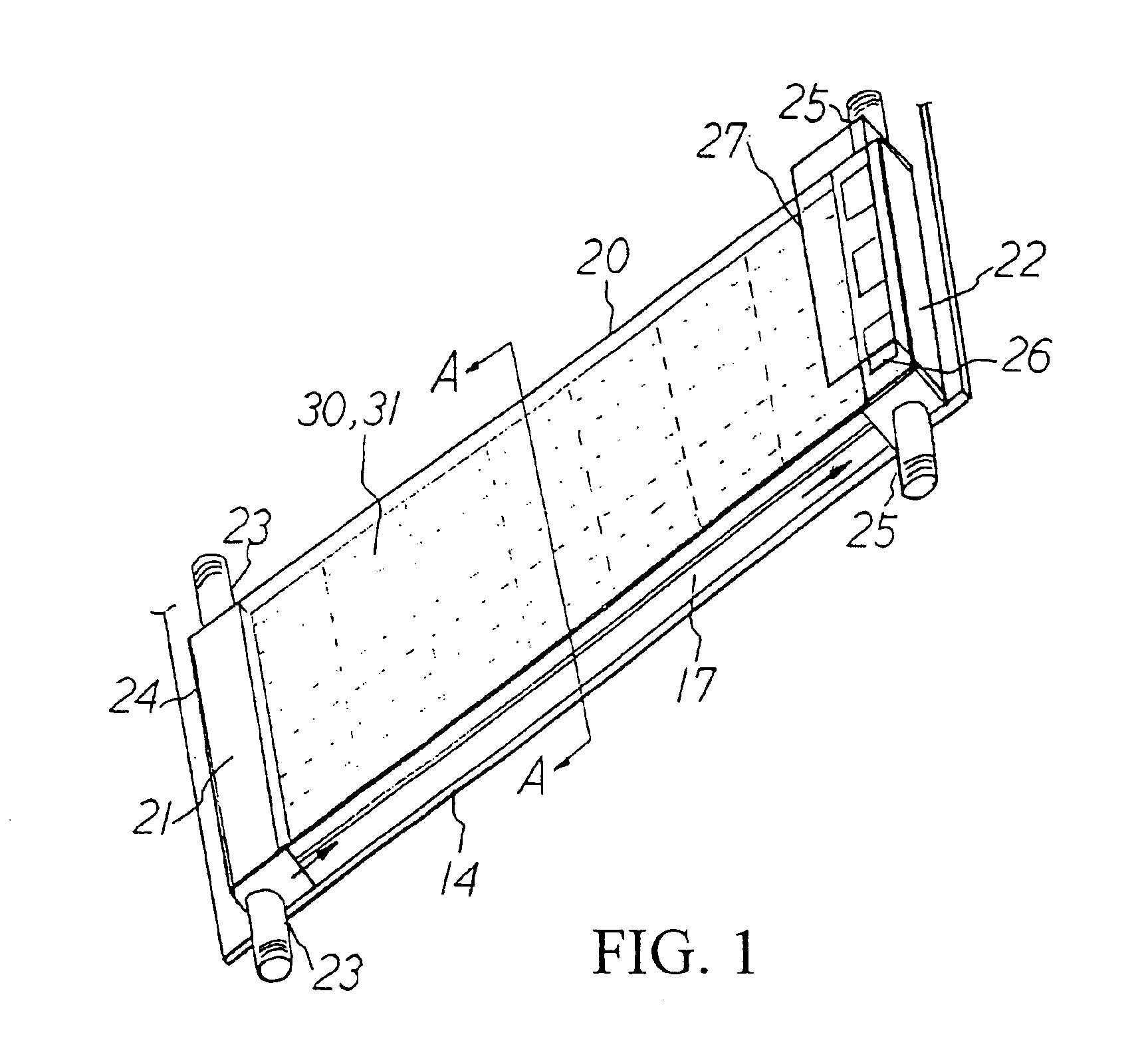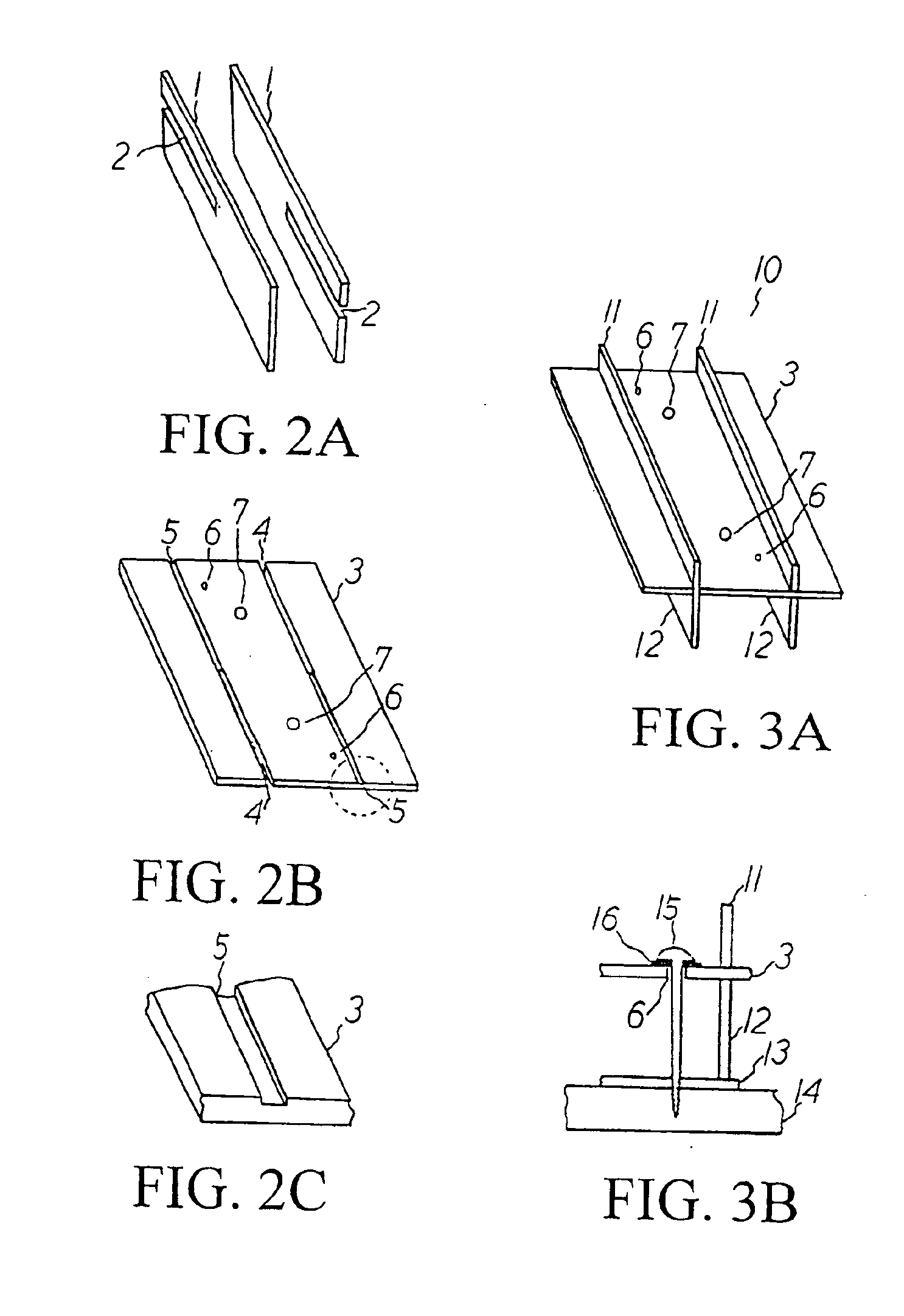Solar air conditioning system
a solar energy and air conditioning technology, applied in the field of energy saving solar energy air conditioning systems for buildings, can solve the problems of environmental destruction, solar collector details, and environmental damage, and achieve the effects of maximizing the introduction of cooled air, reducing environmental pollution, and increasing the overall heat-absorbing efficiency of the entire system
- Summary
- Abstract
- Description
- Claims
- Application Information
AI Technical Summary
Benefits of technology
Problems solved by technology
Method used
Image
Examples
Embodiment Construction
[0050]FIG. 1 is a schematic view of a solar air conditioning system in accordance with the present invention. The air conditioning system includes a solar collector assembly (20), an inlet assembly (21), and an outlet assembly (22). The solar collector assembly (20) forms the paths for heating air and further comprises a heat-absorbing set (17), a transparent panel (30, 31) and a support base (14).
[0051]The heat-absorbing set (17) includes several black modular heat-absorbing units (10). As shown in FIGS. 2A to 2C, a heat-absorbing unit (10) includes two pieces of support boards (1) and a piece of heat-absorbing plate (3). These boards and plate (1, 3) are thin and handy for displaying, packaging, storage, transportation and assembly.
[0052]An elongated groove (2) is formed on the support board (1). The heat-absorbing plate (3) is formed with several heat-absorbing plate fixing holes (6) and several transparent panel fixing holes (7). Also, there is a pair of parallel grooves formed ...
PUM
 Login to View More
Login to View More Abstract
Description
Claims
Application Information
 Login to View More
Login to View More - R&D
- Intellectual Property
- Life Sciences
- Materials
- Tech Scout
- Unparalleled Data Quality
- Higher Quality Content
- 60% Fewer Hallucinations
Browse by: Latest US Patents, China's latest patents, Technical Efficacy Thesaurus, Application Domain, Technology Topic, Popular Technical Reports.
© 2025 PatSnap. All rights reserved.Legal|Privacy policy|Modern Slavery Act Transparency Statement|Sitemap|About US| Contact US: help@patsnap.com



